The Creality Ender 3 is an extremely popular budget 3D printer, along with the subsequent Pro, V2, and S1 versions. As all are open source, they’ve sparked plenty of community modifications, with several upgrades centering around making the machine quieter. Once the mainboard has been replaced, the main source of excess noise is the fans.
In addition to wanting a quieter 3D printing experience, there are multiple other reasons for fan upgrades on your Ender 3. You can replace broken fans or increase the airflow for part cooling, which will accordingly increase the bridgeable distance and overhang angle that can be printed without supports. An upgraded fan will also benefit the hot end and help avoid heat creep.
If you’re encountering any issues connected to these, keep reading for our rundown of the different types of fans, the four kinds that you can find in your Ender 3, and a few suggestions for replacements. Note that the original Ender 3, V2, and Pro share the same recommendations, but due to a difference in dimensions, the S1 has its own upgrade suggestions.
But first, let’s go over the types of fans used on an Ender 3. Hold on to your hat, it’s going to get breezy!
Types of Fans
When it comes to 3D printing, there are two main types of fans:
Axial fans, which blow air through their spinning axis, are the most common ones. Axial fans can be either airflow- or pressure-optimized, depending on the geometry of the blades.
Airflow models are designed to blow a large quantity of air but at lower exit pressure. They also tend to cause a more turbulent jetstream. These have thinner blades. Pressure fans do the opposite. They create a conical stream of high-pressure air that can easily pass through radiators and dust covers, but that doesn’t extend as far as their airflow counterpart. Plus, they have thicker blades.
Centrifugal fans blow air sideways (and are therefore also called blower fans) while providing a relatively low CFM rating. They can be considered pressure fans in many aspects.
Ender 3 Fans
There are four main fans on all Ender 3s: the power supply unit (PSU) fan, the mainboard fan, the hot end fan, and the part cooling fan.
Changing the PSU fan poses some challenges and risks. Since you’ll have to open up the power supply, you should only attempt this with knowledge of the necessary safety precautions. Even if the machine is unplugged, the capacitors can still carry potentially fatal levels of current.
As mentioned, due to the radical changes in design, we’ve covered the Ender 3 S1 separately from the other Ender 3s. Safety recommendations still apply, but fan dimensions may vary.
Considerations
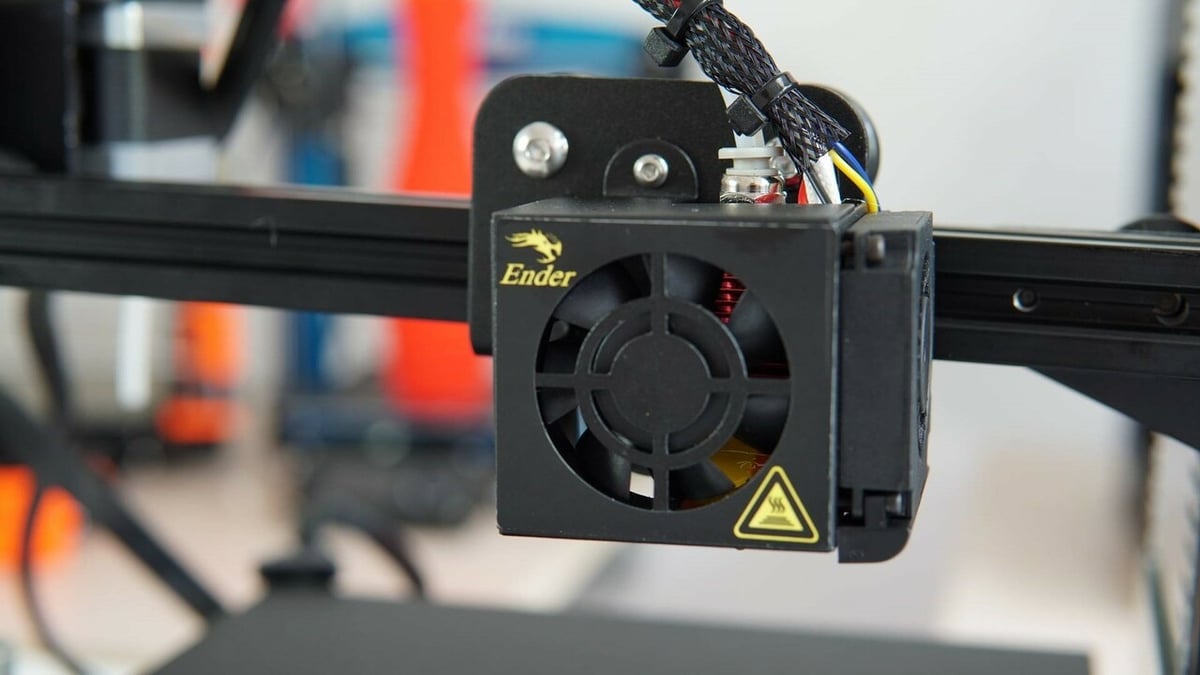
Given the compact dimensions of 3D printing fans, the difference between pressure and airflow ones isn’t particularly important. Instead, there are four main things to consider while looking for a new fan:
- The rated voltage: All the fans on the Ender 3s should run on 24 volts. (We’ve also heard there’s a batch of Ender 3s with power supply fans that run on 12 V, but the only way to confirm this is to check the power supply). You can install 12-V and 5-V fans by powering them via a step-down buck converter.
- The dimensions (including height): While you can always adapt your chassis or fan duct to accept a bigger model, we’ll be focusing on drop-in replacements with the same dimensions as the stock fans. And although the following models should fit their respective printers, it’s always a good idea to double-check the dimensions of both your printer and the desired product.
- The rated noise level: Expressed in dB, this is usually measured at peak power at a one-meter distance. For reference, a whisper is about 30 dB, normal conversation is about 60 dB, and a motorcycle engine running is about 95 dB.
- The amount of air pushed through: This is expressed in cubic feet per minute (CFM).
Now that we know about the types of fans on the Ender 3s, we’ll go through and tell you more about each one and give you several good replacement options. Let’s jump in!
PSU & Mainboard Fans
These keep all the electronics and power delivery sections cool, but they’re usually the loudest.
Most PSU models mount a 4010 (40 x 10 mm) axial fan, while very few bigger units mount a 6010 fan. The motherboard fan is a 4010 model. If there’s space, you can consider upgrading to a thicker 4020 fan for increased airflow.
Noctua NF-A4X10 FLX
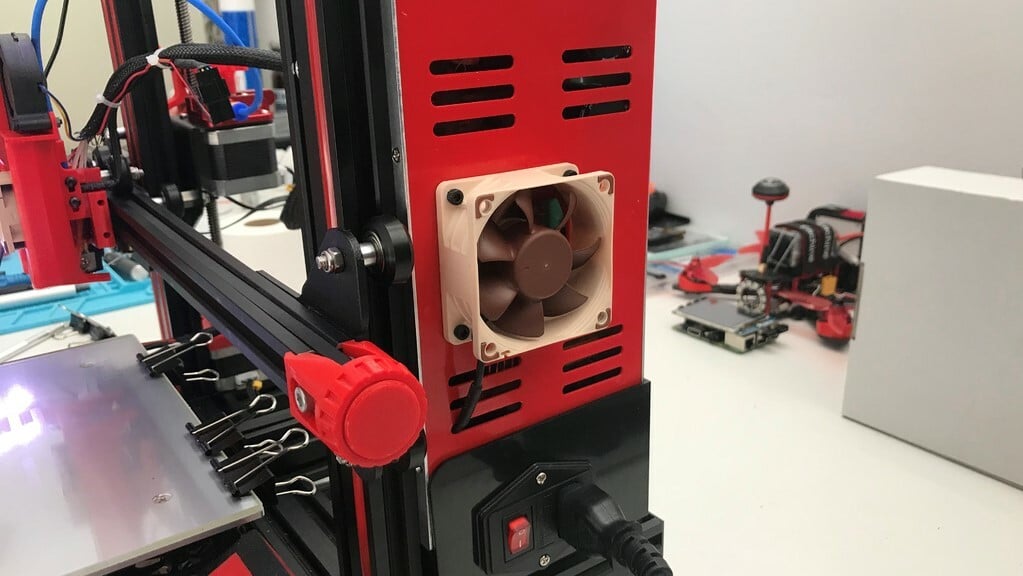
Noctua’s fame in producing silent yet powerful fans for PCs proves to be true for smaller models too. The Noctua NF-A4X10 FLX is a 4010 fan with a 3-pin connector (the yellow cable is for RPM reading).
The package also includes a specific cable to slow down the fan even further and reach an inaudible 12.9 dB.
Unfortunately, the quietness impacts the quantity of air moved through the blades: The peak is 3.8 CFM with the low-noise adapter cable installed. If you’re looking for the quietest experience possible and can sacrifice the airflow, Noctua takes the crown as the most silent fan on the list.
- Rated voltage: 12 V
- Dimensions: 40 x 40 x 10 mm
- Rated noise level: 17.9 dB at full speed
- Rated airflow: 4.8 CFM at full speed
Sunon MagLev 4010
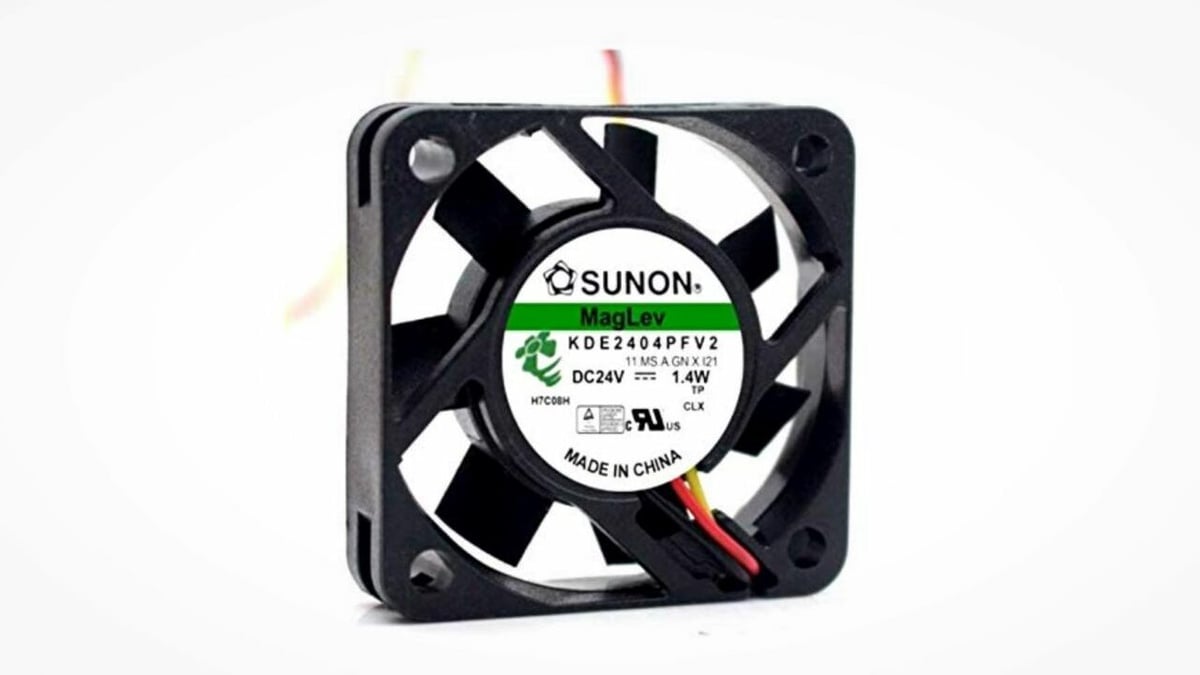
Based on an offspring of the Vapo-Bearing technology, the MagLev axial bearing has, as the name implies, magnets inside. In order to keep the cost contained and the air output high, this model doesn’t perform as quietly as others. But what it loses in quietness, it gains in power and efficiency.
The MagLev 4010 is a champion of airflow, reaching 9.9 CFM at 8500 RPM on selected models. If the stepper drivers are running hot inside the electronic enclosure, this will definitely improve the flow over a stock fan.
- Rated voltage: 24 V
- Dimensions: 40 x 40 x 10 mm
- Rated noise level: 34 dB at full speed
- Rated airflow: 9.9 CFM at full speed
40mm Vapo/omniCool Bearing
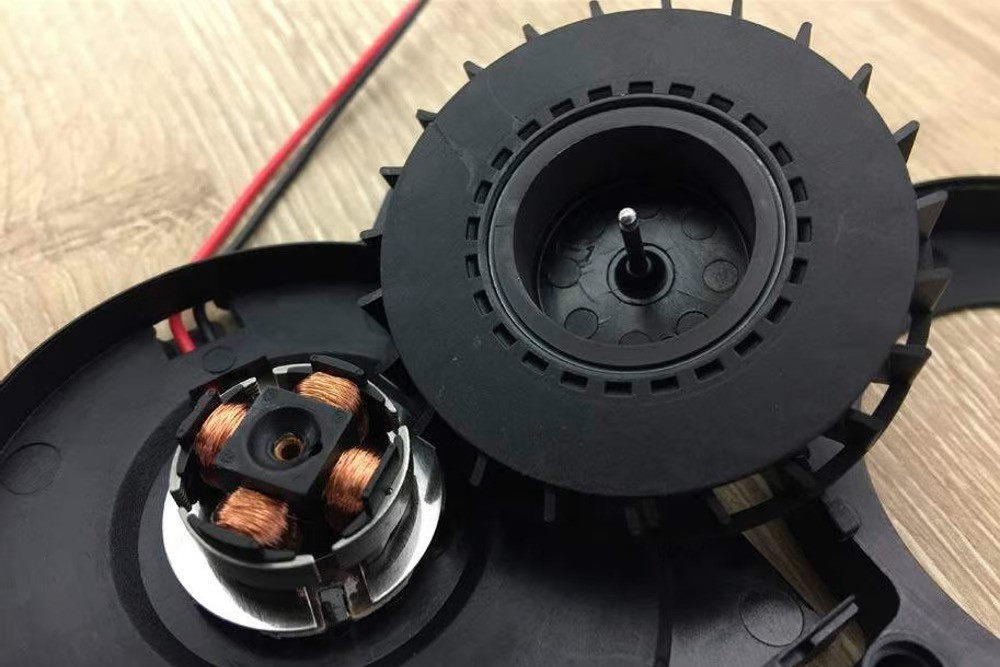
The typology of bearings used in a fan is key to determining how quiet and how long the unit will last. Sunon’s Vapo-Bearing and CUI’s omniCool technology aims at reducing wobble (and therefore wear and noise produced) by placing the fan’s shaft in a magnetic field that acts as a levitation device. The result is a quiet operation at a contained price point.
- Rated voltage: 12 V
- Dimensions: 40 x 40 x 10 mm
- Rated noise level: 30 dB at full speed
- Rated airflow: 5.4 CFM at full speed
Hot End Fans
Not to be confused with part cooling, these fans help keep the nozzle temperature under control. Dissipating the heat accumulated in the heatsink lowers the risk of heat creep (where the filament begins to soften while it’s still in the PTFE tube, causing inconsistent extrusion and clogs). As a consequence, it allows your hot end to reach higher temperatures and print more advanced materials.
Noctua NF-A4X10 FLX (Again)
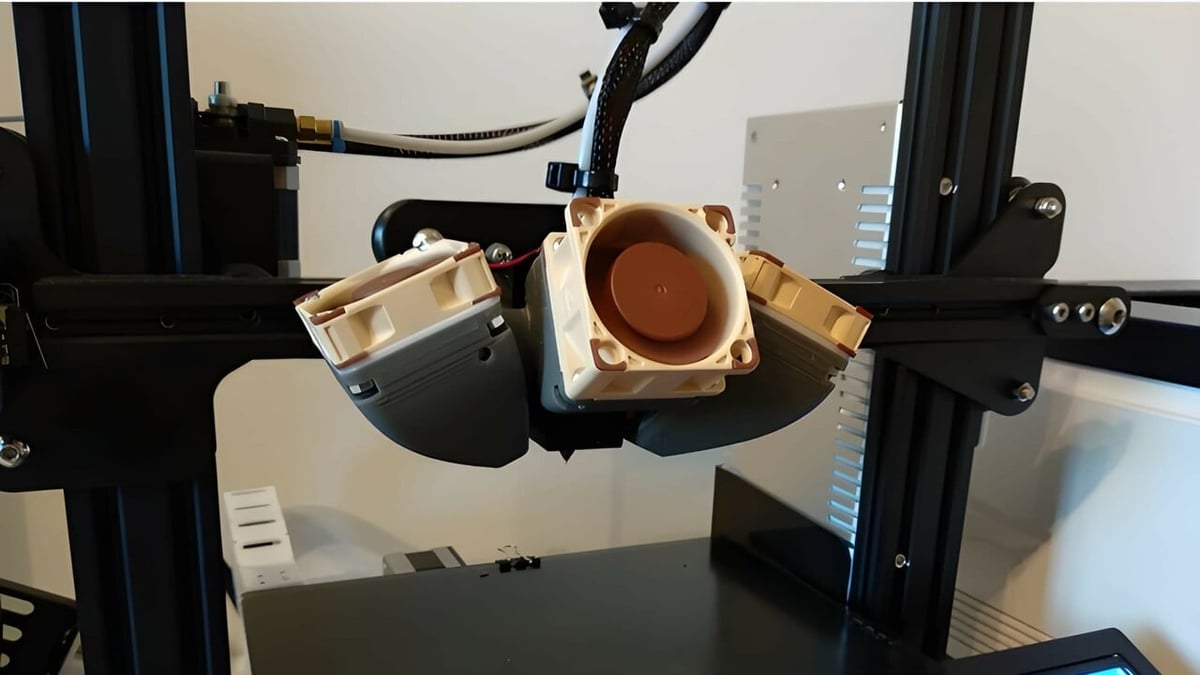
We’re listing the NF-A4X10 FLX here again because it’s the only real true quiet option, but it comes with a warning.
The fan that gets changed the most is the hot end fan, as it’s the fan that’s perpetually on. This has led people to replace it with super silent fans. However, this has raised concerns that those “silent” fans don’t push enough air to effectively cool the heatsink of the Ender 3s. Because there isn’t much surface area between the fins of “silent” fans, greater airflow is required for cooling.
Insufficient airflow could cause what is known as “heat creep”, where the filament begins to soften while it’s still in the PTFE tube, causing inconsistent extrusion and clogs. This is especially prevalent when printing in PLA, which has a glass transition point of around 60 °C. That means the cold end should be kept well below that temperature, which can only be done with a powerful (but potentially noisy) fan.
Therefore, it’s best not to install quiet and low-power fans in this part of the printer. Alternatively, you can look into extruder temperature-controlled fans in Marlin. The fan gets turned on only when the extruder is being heated.
Orion OD4010-24HB
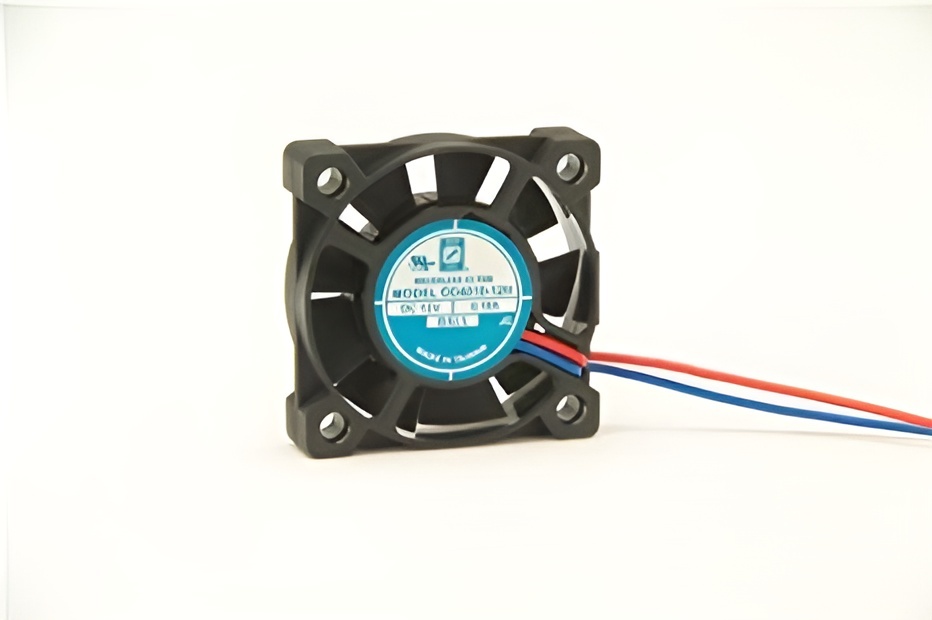
The Orion OD4010-24HB is a powerful model. At a sustained 8000 RPM, it should generate only 33.4 dB and 9.2 CFM. This great performance is reached with a no-compromise approach that’s reflected in the price point.
If you have a particularly demanding hot end setup, this might be your best choice. Other variants boast a significantly higher CFM rating, at the cost of noise and power consumption.
It should be noted that there have been different reviews from users, with some stating it’s louder than the stock option, others valuing how much quieter it is, and some suggesting mods depending on the version of Ender 3 to keep it on the less noisy side of things.
- Rated voltage: 24 V
- Dimensions: 40 x 40 x 10 mm
- Rated noise level: 33.4 dB at full speed
- Rated airflow: 9.2 CFM at full speed
Th3D 40-mm Sealed Bearing
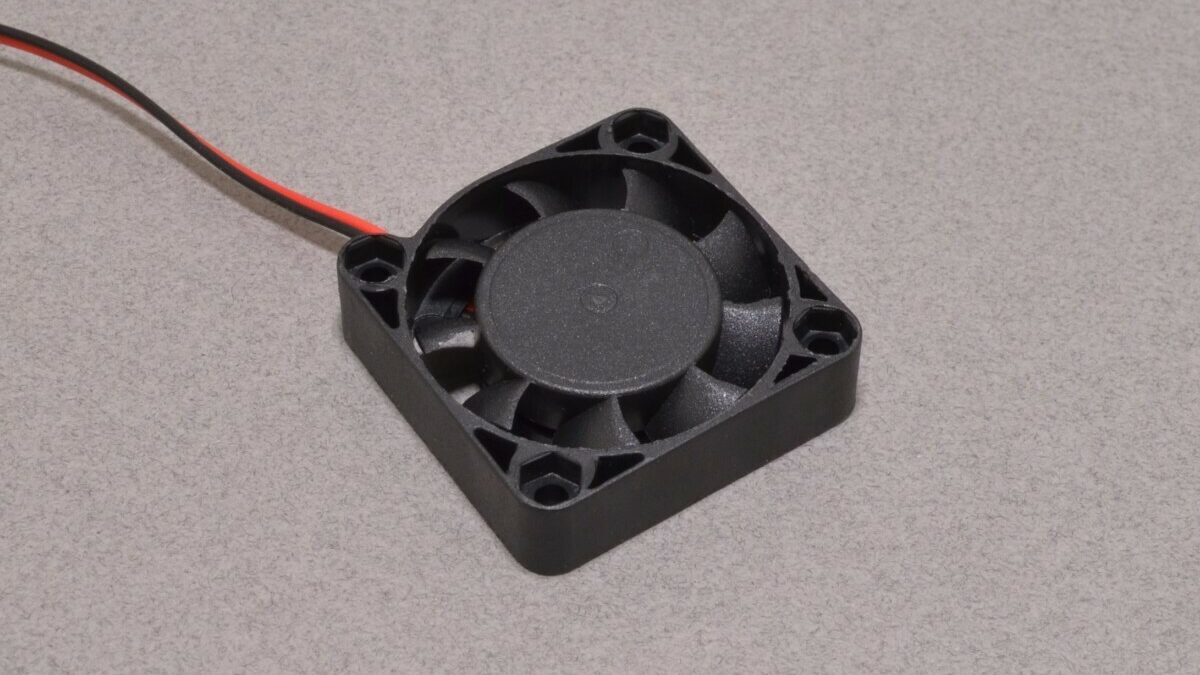
The silence/power tradeoff isn’t an issue for Th3D’s 40mm Sealed Bearing Fan. If you don’t need an exceptionally fast or quiet fan, this middle-grounder will perfectly suit your needs.
With a very decent 25-35 dB range and a maximum airflow of 6.7 CFM, it’s the perfect compromise that unlocks the best of two worlds. It even features reverse-polarity protection to prevent burning the motor due to incorrect wiring.
- Rated voltage: 24 V
- Dimensions: 40 x 40 x 10 mm
- Rated noise level: 35 dB at full speed
- Rated airflow: 6.7 CFM at full speed
Part Cooling Fan
While the stock Ender 3s’ part cooling fans are usually enough for most people, some decide to change them to increase airflow and improve overhangs and bridging performance.
Most Ender 3s use a 4010 blower fan, but a 5015 or 6020 upgrade might allow faster print speeds. Keep in mind that blower fans tend to have a lower flow rating than similarly dimensioned axial fans. On the other hand, they compensate in compactness.
It’s worth mentioning that many users prefer to upgrade the fan duct alongside the fan itself to maximize its effectiveness. Due to this, we featured a selection of models compatible with the most popular fan ducts.
Evercool's EC-4010
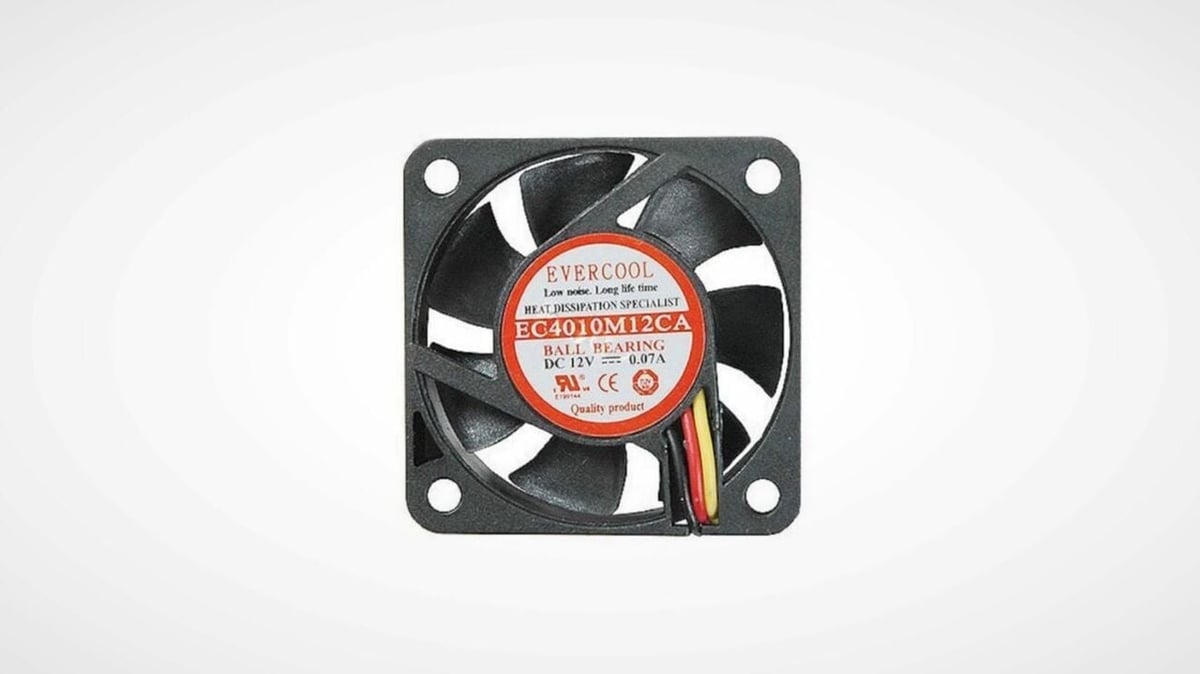
The EC-4010 series by Evercool offers extremely low noise levels and more than decent airflow characteristics. The highest performer, the EC4010TH12X, delivers 6.64 CFM at less than 25 dB. If the airflow isn’t your main concern, you can go as low as 16 dB and 2.96 CFM.
- Rated voltage: 12 V
- Dimensions: 40 x 40 x 10 mm
- Rated noise level: 25 dB at full speed
- Rated airflow: 6.64 CFM at full speed
Fractal Designs' Silent 40 mm
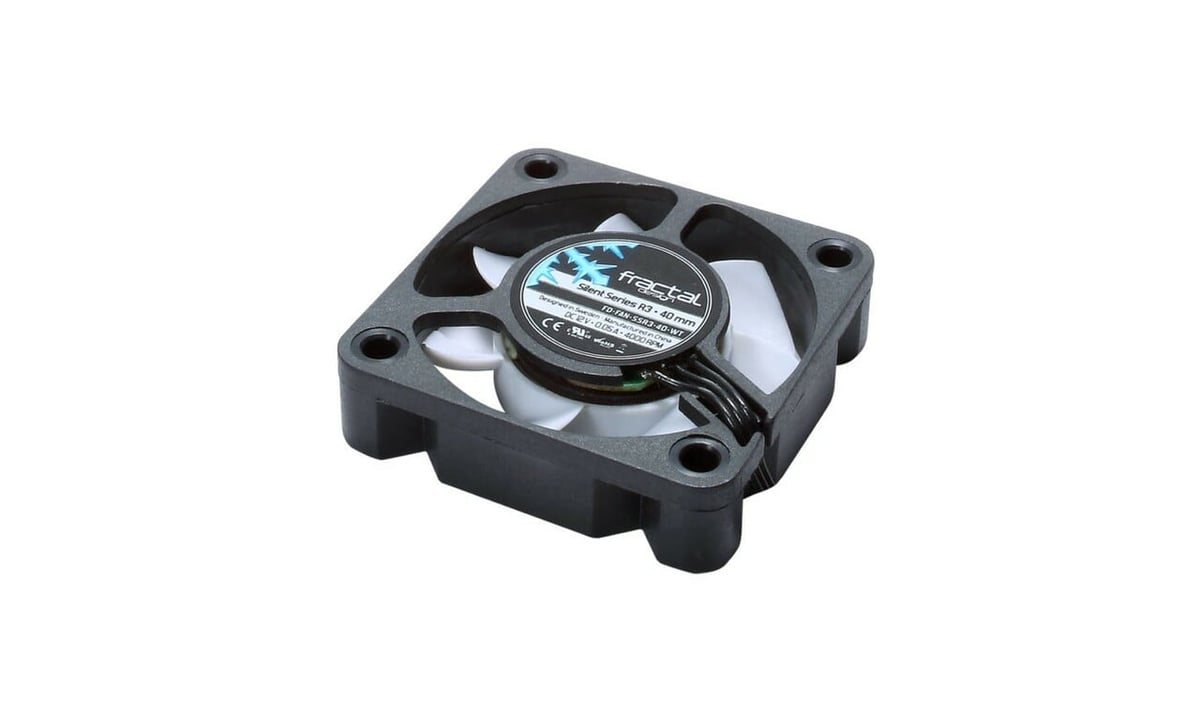
Fractal Designs is renowned among PC enthusiasts for its quiet cases and fans. The Silent lineup offers exactly that: a cheap and well-balanced fan with good airflow capabilities. The all-black cable is an aesthetic improvement, but make sure to get the pinout right when plugging it in.
- Rated voltage: 12 V
- Dimensions: 40 x 40 x 10 mm
- Rated noise level: 20 dB at full speed
- Rated airflow: 3.6 CFM at full speed
Noiseblocker's Black Silent XM2
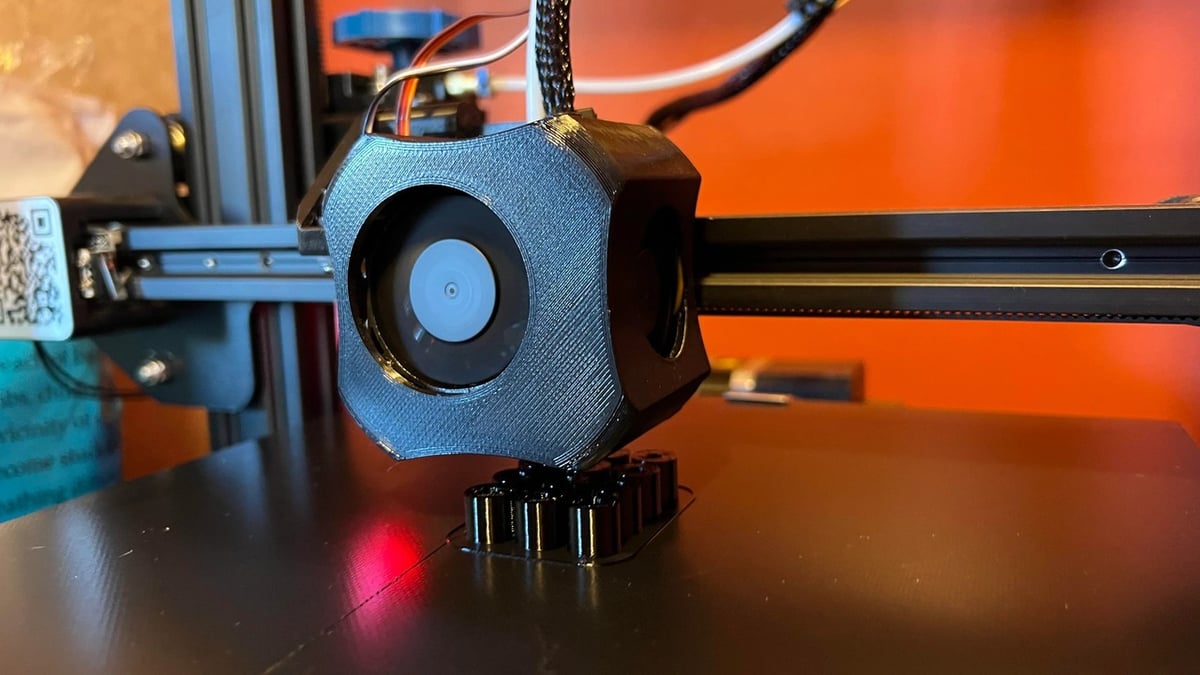
Blacknoise’s Noiseblocker BlackSilent XM2 is a champion of quietness. At only 14 dB, this model is barely over the audible range. This is due to a custom-designed bearing and an optimized fan rotor shape. The drawback is, as usual, the airflow: 3.9 CFM.
- Rated voltage: 12 V
- Dimensions: 40 x 40 x 10 mm
- Rated noise level: 14 dB at full speed
- Rated airflow: 3.94 CFM at full speed
Ender 3 S1
On early models of the S1, the Sprite extruder mounts 3010 blower fans instead of the 4010 axial models. You can follow the recommendations above for the mainboard and PSU fan since the dimensions remain the same.
For later models, it may be the case that 4010 models are required. For this reason, it’s important that you double-check which dimensions your S1 will accept!
Sometimes, the chassis metal grille is a bottleneck for the airflow. If you don’t feel much air going through, consider cutting around an opening.
Gdstime 3010 Blower Fan
The smaller you go, the lower the air output will be. In the case of 3010 fans, and in particular the Gdstime 3010 Blower Fan, the rated airflow stands at 1.75 CFM. If you’re experiencing issues with cooling, we would advise you to jump directly to the next level and upgrade to a higher-performing model. The advantage here is that it runs on 24 V, eliminating the need for a buck converter.
- Rated voltage: 24 V
- Dimensions: 30 x 30 x 10 mm
- Rated noise level: 28.3 dB at full speed
- Rated airflow: 1.75 CFM at full speed
Winsinn 30-mm Blower Fan
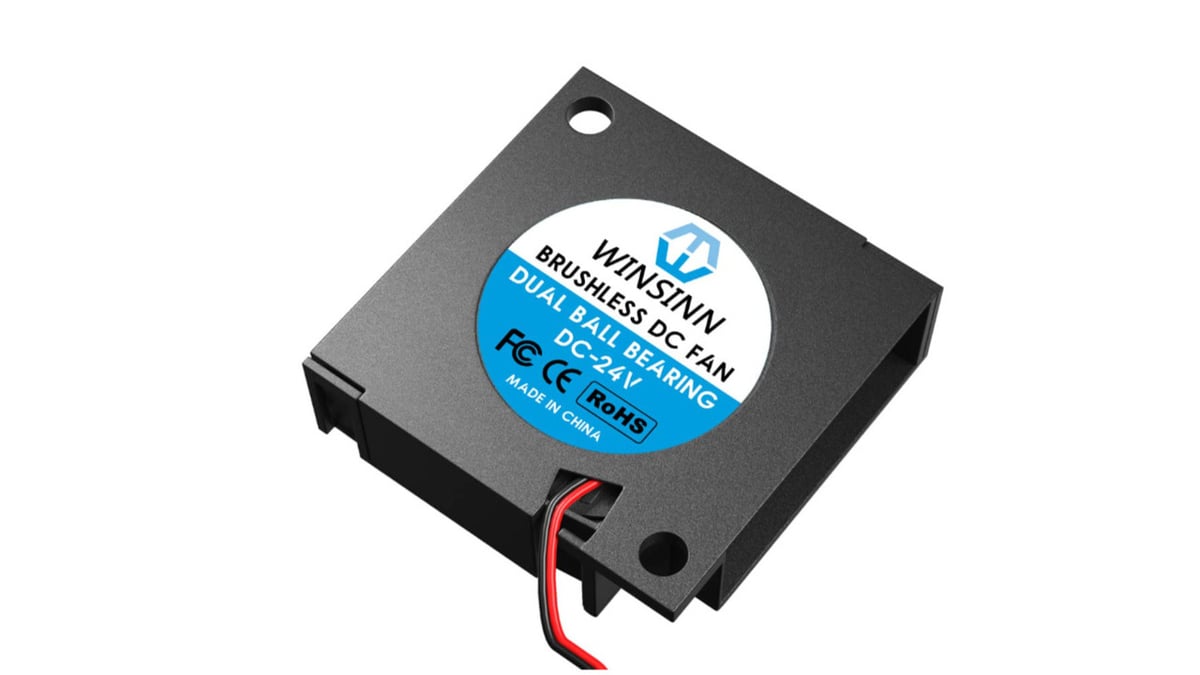
Coming in with a peak noise level of 22.5 dB, the Winsinn 30-mm blower fan won’t feel like a jet on the runway. This is due to the little air moved and the compact dimensions. The package includes two units, so you can easily swap out both fans in the extruder assembly.
- Rated voltage: 24 V
- Dimensions: 30 x 30 x 10 mm
- Rated noise level: 22.5 dB at full speed
- Rated airflow: 1.55 CFM at full speed
Bonus: Fan Ducts
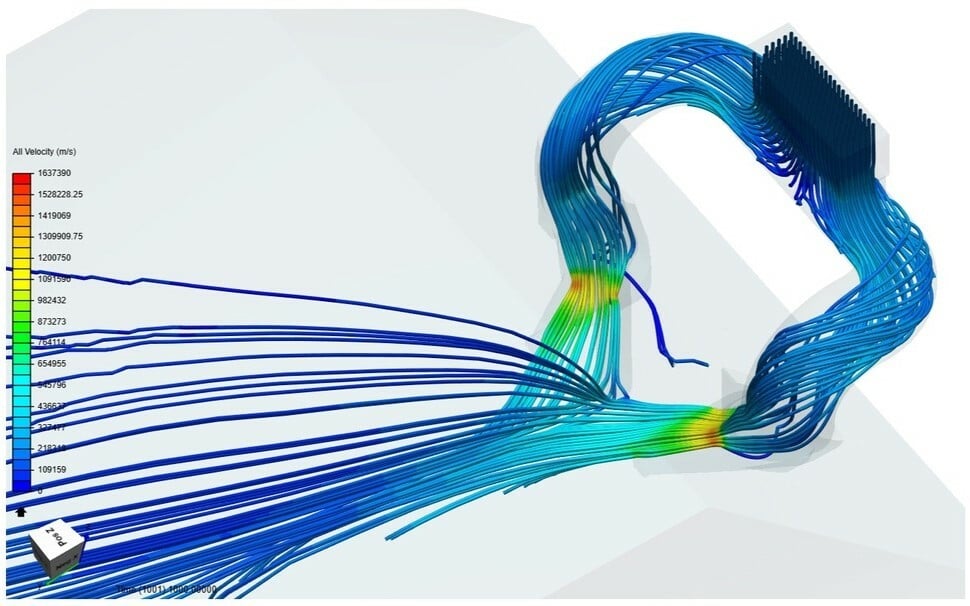
While the stock Ender 3s’ part cooling fans are usually enough for most people, some decide to up the ante by changing the cooling duct on their fan. Among our choices are ducts designed for bigger blower fans of 50 x 15 mm, like the type used on the CR 10 S Pro. These ducts should enable a greater airflow with the stock cooling fan, and they generally support most other types of fans.
Here are three of the most popular designs on Thingiverse. (Note that they may not be directly compatible with the S1.)
- The Petsfang/Bullseye remains the fan favorite. This design is highly optimized in terms of airflow redirection and intensity, making it suited for top-tier and fast printing applications.
- The Hero Me Gen7 has also gained popularity, thanks to the modular design that fits an impressive variety of printers and hot ends.
- The Satsana is really appreciated among those looking for sleek yet functional designs.
License: The text of "The Best Ender 3 (V2/Pro/S1) Fan Upgrades of 2023" by All3DP is licensed under a Creative Commons Attribution 4.0 International License.
CERTAIN CONTENT THAT APPEARS ON THIS SITE COMES FROM AMAZON. THIS CONTENT IS PROVIDED ‘AS IS’ AND IS SUBJECT TO CHANGE OR REMOVAL AT ANY TIME.








